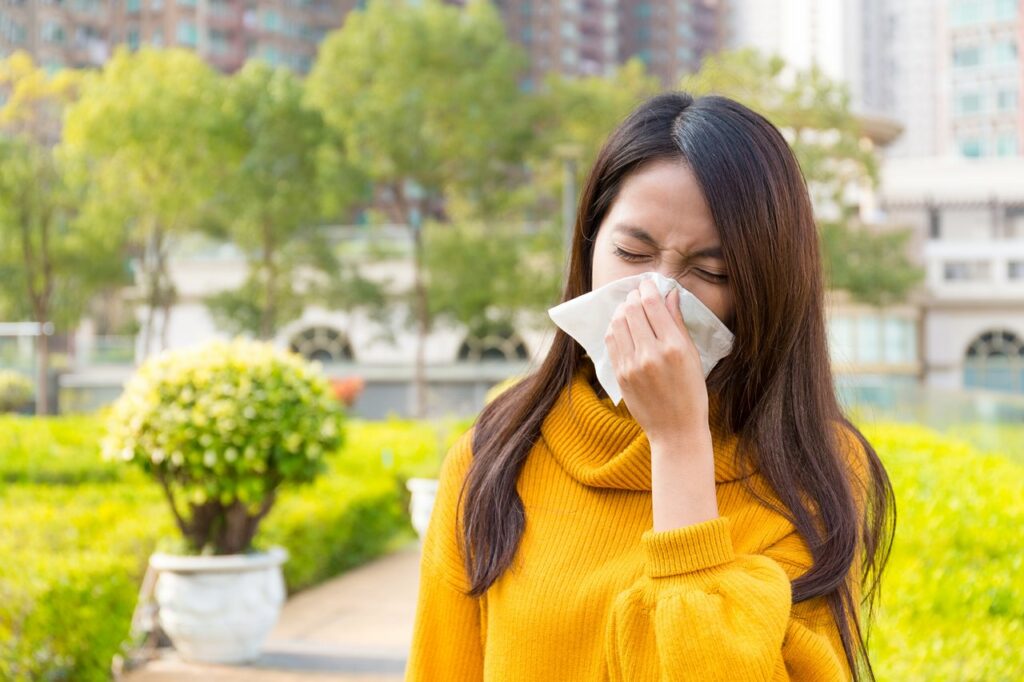Warm weather brings people outdoors where they are greeted with sunshine and breezes, as well as allergens like tree, grass and weed pollen. This is a big problem if you have allergies or asthma, and to make matters worse, research shows allergy season is starting earlier and lasting longer than usual.
“Climate change is causing longer and more intense allergy seasons,” explained Kenneth Mendez, CEO and president of the Asthma and Allergy Foundation of America (AAFA). “Warmer temperatures start the spring pollen season sooner and the first freeze, which stops ragweed growth, a major fall allergen, happens much later. Higher levels of CO2 (carbon dioxide) caused by pollution also creates more intense releases of pollen.”
Allergies are a serious public health concern, Mendez stressed. Good indoor air quality is an important part of a healthy living space, and it is a particular concern for the 25 million Americans living with asthma and the more than 50 million Americans experiencing various types of allergies each year. About 24 million Americans have seasonal allergic rhinitis, more commonly referred to as “hay fever.” Pollen is a major cause.
Common symptoms of seasonal allergic rhinitis include:
- Sneezing
- Stuffy nose (nasal congestion)
- Runny nose (usually a thin, clear discharge)
- Red and watery eyes
- Itchy nose, eyes, ears or mouth
- Swelling around the eyes
“While you can’t control the air outside, there are many effective ways you can help prepare your home for pollen season and help improve your indoor air quality, so everyone can breathe easier,” said Dr. John McKeon, CEO of Allergy Standards Limited (ASL), an international certification organization. “Allergy and asthma control truly begins at home.”
To help you prepare your home for the extended pollen season, Mendez and McKeon share their most effective strategies:
Be selective and look at labels
When shopping, you probably look for home items that are designed for people with allergies or asthma. The problem is many products claim to be hypoallergenic, but there are no regulations on how that term can be used, so often it’s only as a marketing ploy. People with asthma and allergies need products and services that are backed by science because their health depends on it.
The asthma & allergy friendly® Certification Program is a unique, groundbreaking collaboration between AAFA and ASL. The program scientifically tests household products against strict standards, and those that pass earn the CERTIFIED asthma & allergy friendly® mark. Certified products include air cleaners, air filters, bedding, cleaning products, flooring, paints, vacuum cleaners, washing machines and more. Learn more at: AAFA.org/Certified.
Monitor pollen counts closely
During allergy season it’s important to manage your exposure to pollen to ensure as little as possible is brought into the home. This can be challenging as any time you’re outside microscopic allergens are in the air and can collect on your clothes, skin and hair.
Start by using an app that tracks local pollen counts, so you can know when pollen counts are high, and you can limit your outdoor activities. If you do need to spend time outside, try to avoid peak pollen periods, which typically happen midday. Early morning and evening may be better options as pollen counts may be lower. Furthermore, wear sunglasses and cover your hair when outside to keep pollen out of your eyes and hair.
Protect your home from pollen
In addition to monitoring pollen counts and being mindful about time outdoors, keep your windows closed during high pollen days and use central air conditioning or air cleaners with a CERTIFIED asthma & allergy friendly® filter and/or HEPA filtration. Keep windows closed when driving in a vehicle as well.
If you spend time outside, change and wash your clothes when you get home. If you have pets, wipe them off with a towel before they enter your home. For yourself, bathe and shampoo your hair (or cover it when outside) daily before bed to remove pollen and keep it from your bedding. Once a week, wash bedding in hot water and detergent, and dry in the clothes dryer or inside, rather than outdoors on a line.
Although allergy seasons are starting earlier and lasting longer, that doesn’t mean you can’t take practical steps to prepare your home for pollen season. With these tips you can help improve your indoor air quality and limit pollen from entering your home. (BPT)
Susan Brewer Service First Real Estate (636)936-8600
Published on 2022-05-16 13:14:03


